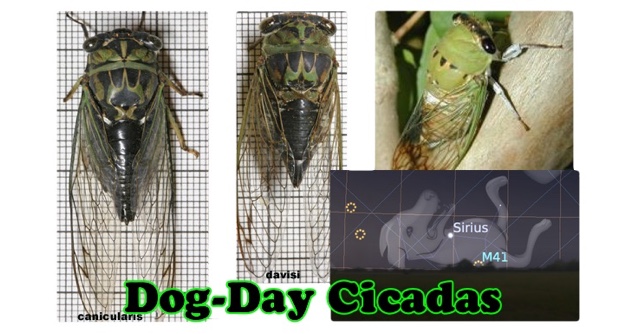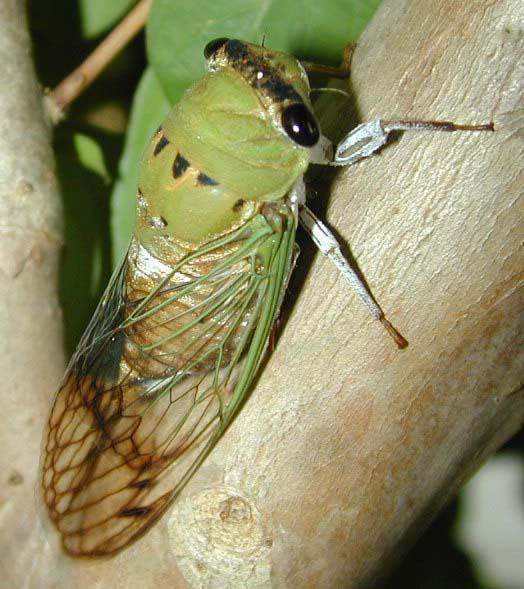
Photo credit: N. canicularis (Dog-Day cicada) and N. davisi (Southern Dog-Day cicada) by Paul Krombholz. N. superbus by Sloan Childers.
Dog-day cicada is the common name given to Tibicen (now Neotibicen) type cicadas in North America. These cicadas are called “Dog Day” because they are typically observed during the “Dog Days of Summer“, which fall somewhere between late July to early September, or once the “Dog Star” Sirius appears in the morning sky. All Neotibicen species are present during the month of August in North America.
Dog-day cicadas are known for their green, brown, black & white coloration that provides them with excellent camouflage in the trees they inhabit.
Dog-day cicada is used generally to describe most Neotibicen, but a few species are explicitly named Dog-day:
- Neotibicen canicularis aka the Dog-day cicada. Canicularis is Latin for “of the dog star”, and the dog star is Sirius. Found in AR, CT, DC, IL, IN, IA, KS, ME, MB, MD, MA, MI, MN, MO, NE, NB, NH, NJ, NY, NC, ND, NS, OH, ON, PA, PE, QC, RI, SC, SD, TN, VT, VA, WV, WI. Season: August-October.
- Neotibicen davisi, aka the Southern Dog-day cicada. There are two sub-species. Found in AL, DE, DC, FL, GA, LA, MD, MA, MS, NJ, NY, NC, PA, SC, TN, TX, VA, WV. Season: July-October.
- Neotibicen superbus aka the Superb Dog-day cicada. Found in AR, KS, LA, MO, NM, OK, TX. Season: June-August.
- Neotibicen auriferus, aka the Plains Dog-day Cicada. Found in AR, KS, MO, NE, NM, OK, TX. Season: July-September.
- Neotibicen similaris, aka Similar Dog-Day Cicada. Found in AL, FL, GA, LA, MS, NC, SC. Season: June-September.

Photo credit: Neotibicen superbus by Sloan Childers
These cicadas do not actually appear the moment Sirius rises, and when they do appear depends on your location and the weather. Neotibicen canicularis will appear in Arkansas before it appears in Quebec. That said, if you are curious when Sirius will rise in your area, search for “heliacal rising of sirius” — it varies about a day per degree of latitude. Neotibicen, depending on the species, can be found from May to December (December in Florida), but all Neotibicen species are present during the month of August in North America.
2 replies on “Dog Day Cicadas”
Why might I be hearing THE dog-day cicada in June in Northern Wisconsin? Just started hearing them today.
Seems odd, but it looks like temps are entering the 80s/90s range.